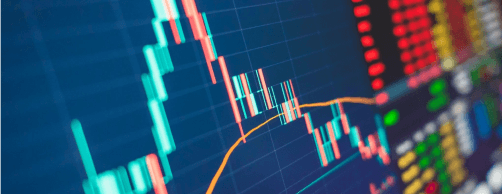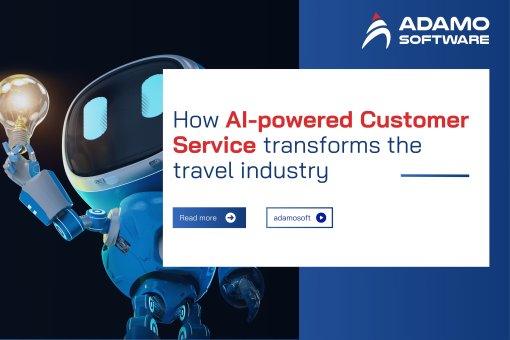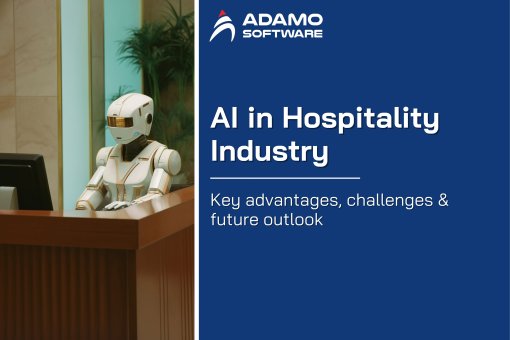Dynamic pricing software: From A-to-Z guideline
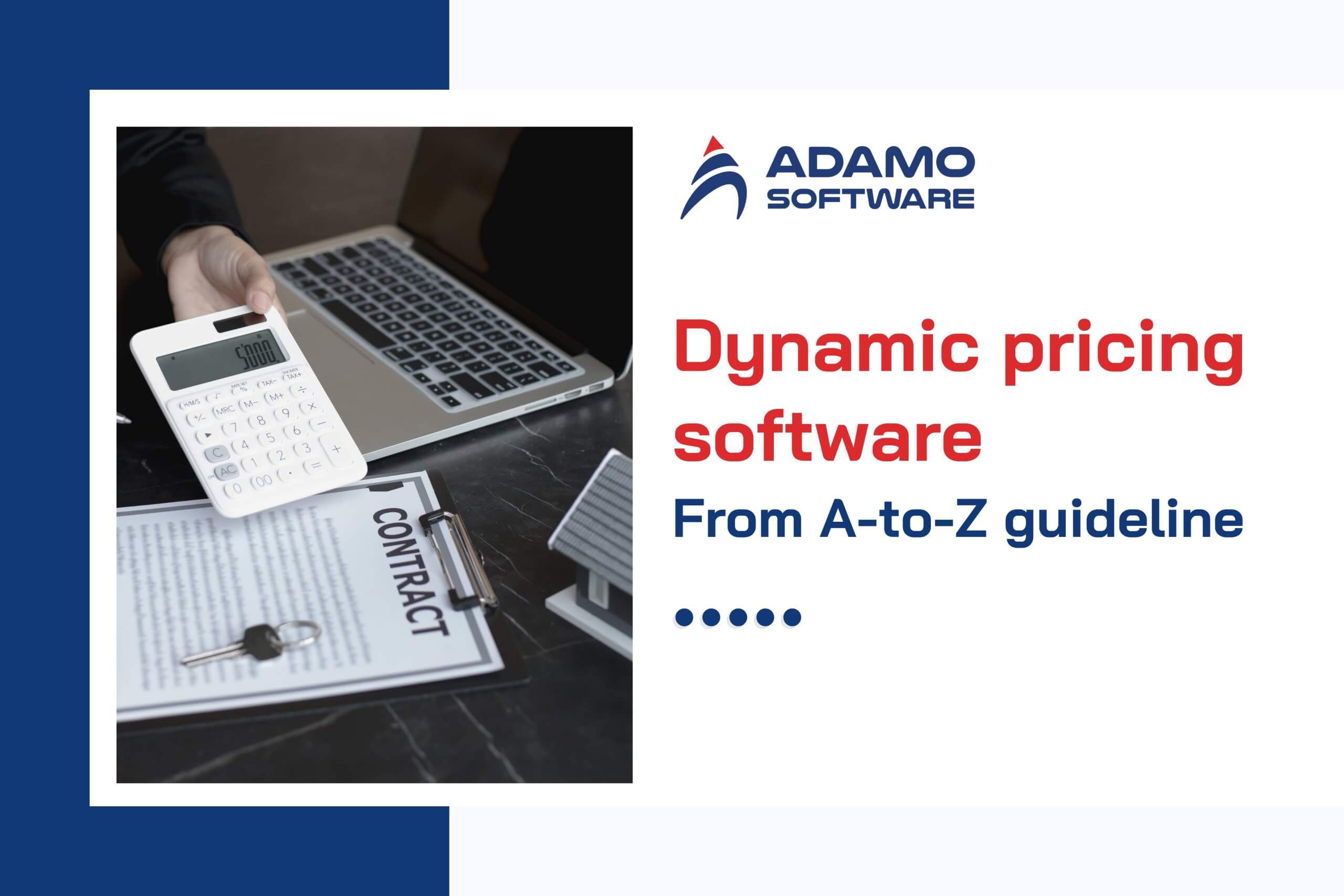
Dynamic pricing software is essential for business working in the hospitality industry. Let’s learn about the software with Adamo Software!
If you are a hotel owner or working in the hotel industry, you may want your hotel to maximize hotel occupancy and revenue through optimal pricing. A hotel cannot compete with other competitors without a suitable pricing strategy. When you adjust your hotel room rates appropriately, you can boost your hotel revenue and profit while maintaining stable numbers of guests. By ensuring the best possible pricing, dynamic strategies allow your hotel to maximize revenue and limit losses. This strategy can be supported by automated technology, specifically hotel dynamic pricing software. So, what is this software and what can it be used for? Let’s learn about this with Adamo Software!
Through this blog post, besides getting some insights about the dynamic pricing software and its features, you will also know its benefits. Additionally, Adamo also discusses how to implement dynamic pricing software at your hotel and recommends the 05 best dynamic pricing software for businesses. All information has been thoroughly researched and updated to the latest trends. So, let’s read our blog post and find some useful information!
I. What is Hotel Dynamic Pricing Software?
Dynamic pricing, or daily pricing allows your hotel to adjust rates daily according to forecasted and real-time supply and demand. This involves real-time adjustments of rates according to market conditions. By responding to supply and demand, dynamic pricing enables frequent rate adjustments, allowing hotels to optimize their revenue. Its adaptability to today’s market makes it a preferred strategy for numerous hoteliers.
Hotel dynamic pricing software is a tool that uses data and algorithms to dynamically adjust hotel room prices in real-time. The software is used by hoteliers to optimize revenue and occupancy rates based on various market factors. Below are some outstanding ones.
You can explore the overview of channel management software here.
1. Market supply and demand
Based on the market supply and demand, the hotel dynamic pricing software can adjust suitable room rates accordingly. The system automatically raises hotel rates during high demand and lowers them during low season to attract bookings.
2. Current booking status
Room availability determines the price setup of the hotel dynamic pricing software. The system analyzes hotel room availability to increase, maintain, or decrease current rates. As hotels approach full occupancy, the software can automatically increase prices to optimize revenue generation. Conversely, with a high number of available rooms, the software will lower prices to boost occupancy.
3. Competitor prices
The hotel dynamic pricing software will adjust the hotel room rates following the room rates of the hotel’s competitors. The software often includes a tool to compare prices with nearby hotels. When the hotel’s competitors decrease their room rates, the software will automatically suggest rate adjustments to remain competitive. Thanks to this, the hotel will not lose customers to competitors.
4. Price and occupancy history
Price and occupancy history are also factors affecting the room rate adjustments. The hotel dynamic pricing software will use the data related to past rates and occupancy rates to forecast future trends. Based on detailed statistics, the system allows the hotel to make appropriate choices on hotel room rates.
5. Other external factors
Besides internal data, hotel dynamic pricing considers external factors such as weather, weekday/weekend, and tourist season. For example, on the weekends, holidays, or peak tourist seasons, the room rates often rise. Besides, by analyzing weather forecasts, the software can proactively adjust prices if bad weather is expected to reduce visitors.
In general, hotel dynamic pricing software is an ideal solution for hotels to increase revenue, improve occupancy rates, and stay competitive in the market. Based on different factors, the hotels can respond quickly to fluctuations and offer optimal prices.
Ready to Outsource?
Discover how we can transform your business with expert IT solutions.
II. Must-have features in Dynamic Pricing Software for hotels
Selecting the appropriate dynamic pricing software can significantly benefit your hotel. However, it is not easy to choose software from various options. Before choosing, you may want to know the essential features of dynamic pricing software for hotels. Let Adamo Software discuss some of the outstanding ones.
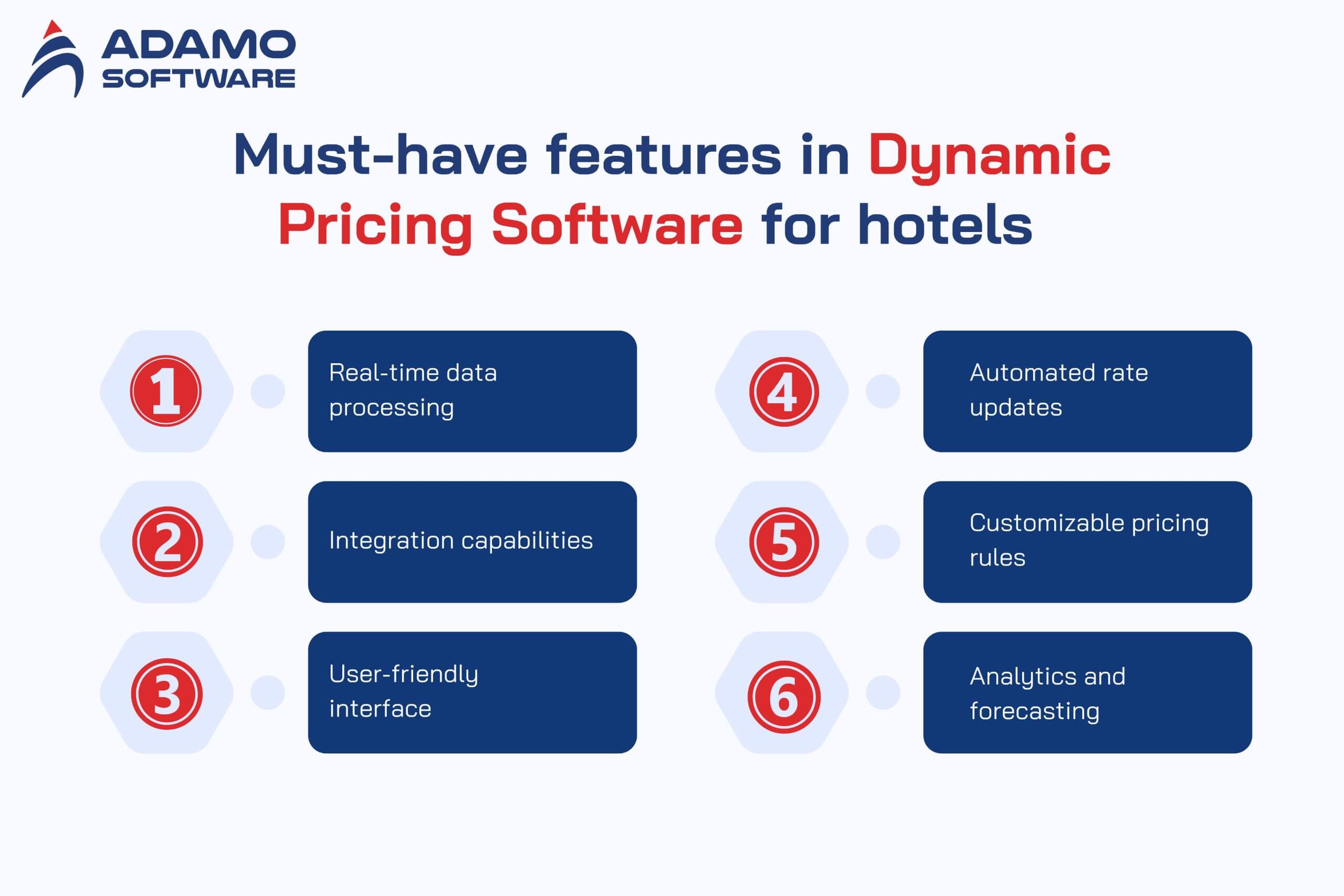
Real-time data processing
Real-time processing of data is one of the indispensable features of the hotel dynamic pricing software. This feature helps the software respond quickly to market changes, thereby adjusting the hotel’s room rates. The software immediately collects and processes real-time data on room availability, bookings, local events, and consumer behavior.
Accurate, up-to-date pricing from hotel dynamic pricing software helps your hotel avoid underpricing and capture optimal revenue. You will not have to wait until the end of the day or weekend to have aggregate data to adjust the room rates. Continuous data analysis ensures maximum flexibility and efficiency in your hotel operations.
Integration capabilities
When choosing dynamic pricing software for your hotel, consider its integration with your existing systems. Effective software must seamlessly integrate with PMS, CRS, and OTAs like Booking.com or Agoda. These integrations enable the hotel dynamic pricing software to automatically input data and update prices across all hotel distribution channels.
This function eliminates manual data entry, saving you time and effort for other hotel management tasks. Simultaneously, it ensures consistent hotel rates across all platforms, enhancing your professional image.
User-friendly interface
When you choose a hotel dynamic pricing software, you must also consider its interface. An intuitive interface is vital for users to effectively operate hotel dynamic pricing software. The software needs easy navigation for all hotel staff.
The system typically offers a clear dashboard with visual metrics, charts, and automated alerts. This makes it easy for users to follow the data and adjust the room prices. Besides, users can save time in analyzing data and making decisions.
Automated rate updates
The hotel dynamic pricing software’s automated rate updates feature helps you save time and maintain your competitive advantages. Instead of manually updating prices for each channel or room type, the software automatically adjusts prices based on pre-set criteria. This continuous operation allows you to capture business opportunities anytime. This is particularly important during high-demand periods like holidays, weekends, or competitor price changes.
Customizable pricing rules
Customizable pricing rules are also another important feature of the dynamic pricing software for hotels. Since each hotel has unique strategies and goals, the software should allow for customized pricing rule setups. For instance, hotel managers can set minimum or maximum prices and vary rates by room type, booking time, or platform. Custom rules give your hotel complete pricing control without constant manual adjustments.
Analytics and forecasting
With the analytics and forecasting feature, the hotel dynamic pricing software allows you to have a comprehensive view of business operations. You’ll get detailed reports on hotel pricing performance, occupancy rates, and revenue over time from the software. These statistics let you evaluate your past hotel pricing strategies.
In addition, this function of the software can help you proactively plan for the future. For example, you can predict high demand in the next month to increase prices early. This gives you a significant advantage in responding to market dynamics.
III. Benefits of Dynamic pricing in hospitality
Dynamic pricing software is an effective solution for hotels. Dynamic pricing, with its automatic adjustments, helps your hotel increase revenue, improve guest experience, and operate more efficiently. Let’s discuss some notable benefits of dynamic pricing in hospitality with Adamo Software!
Boosting bookings and revenue
Increased bookings and revenue are obvious benefits of using hotel dynamic pricing software. Dynamic pricing helps your hotel maximize revenue by automatically adjusting prices to peak demand. Simultaneously, the system reduces hotel prices in low seasons to boost demand and maintain occupancy. Timely market response can significantly improve booking numbers for your hotel.
Increasing demand
When implemented effectively, dynamic pricing can lead to higher occupancy rates for your hotel. Hotel dynamic pricing software helps you offer reasonable prices at all times. This enables you to attract more customers, encouraging them to book rooms. Offering flexible low-season prices can significantly attract budget-conscious travelers. This helps hotels fill rooms even during low-demand periods.
Understanding customer behavior
Dynamic pricing software collects and analyzes data on customer booking behaviors. This includes search time, stay length, customer segments, etc. By understanding guest habits and preferences, you can tailor pricing and service strategies for each target audience in your hotel.
Balancing occupancy
Strategic price adjustments through dynamic pricing help your hotel achieve a more balanced booking distribution weekly and annually. Over-reliance on peak periods creates an unhealthy imbalance for a hotel. Thus, the hotel dynamic pricing software is needed to adjust this shortcoming. The software strategically adjusts prices for off-peak reservations, not just peak times. This results in more stable occupancy and fewer long-term vacancies for your hotel.
Reducing manual workload
Reducing manual workload is also another advantage of the hotel dynamic pricing software. Automated algorithms remove guesswork from rate setting, saving time for guest relations and property management. By automatically updating prices and synchronizing them across all distribution channels, the software significantly reduces the manual workload for your hotel’s price management team. Employees at your hotel will no longer have to handle daily manual price monitoring and changes.
Making decisions based on data
Dynamic pricing software analyzes historical data, real-time markets, and competitors for more accurate hotel revenue decisions. With detailed reports on price performance, booking trends, and market feedback, your hotel can make timely strategy adjustments. This forms the basis for long-term, sustainable hotel development in the competitive market.
Enhancing consistency and transparency
Reconciling manual rate changes across multiple channels is a common struggle for hotel revenue managers. This software ensures consistent, precise, and up-to-date pricing across all hotels booking channels: websites, OTAs, and agents. This fosters a more transparent and trustworthy experience for customers. Thanks to the software, you can avoid price discrepancies across booking channels, building trust and a reputation for your hotel.
IV. How to implement Dynamic Pricing Software at your hotel
Implementing the dynamic pricing software is extremely beneficial to your hotel, as mentioned above. However, how to implement the software at your hotel? Here are five essential steps to adopt the software effectively.
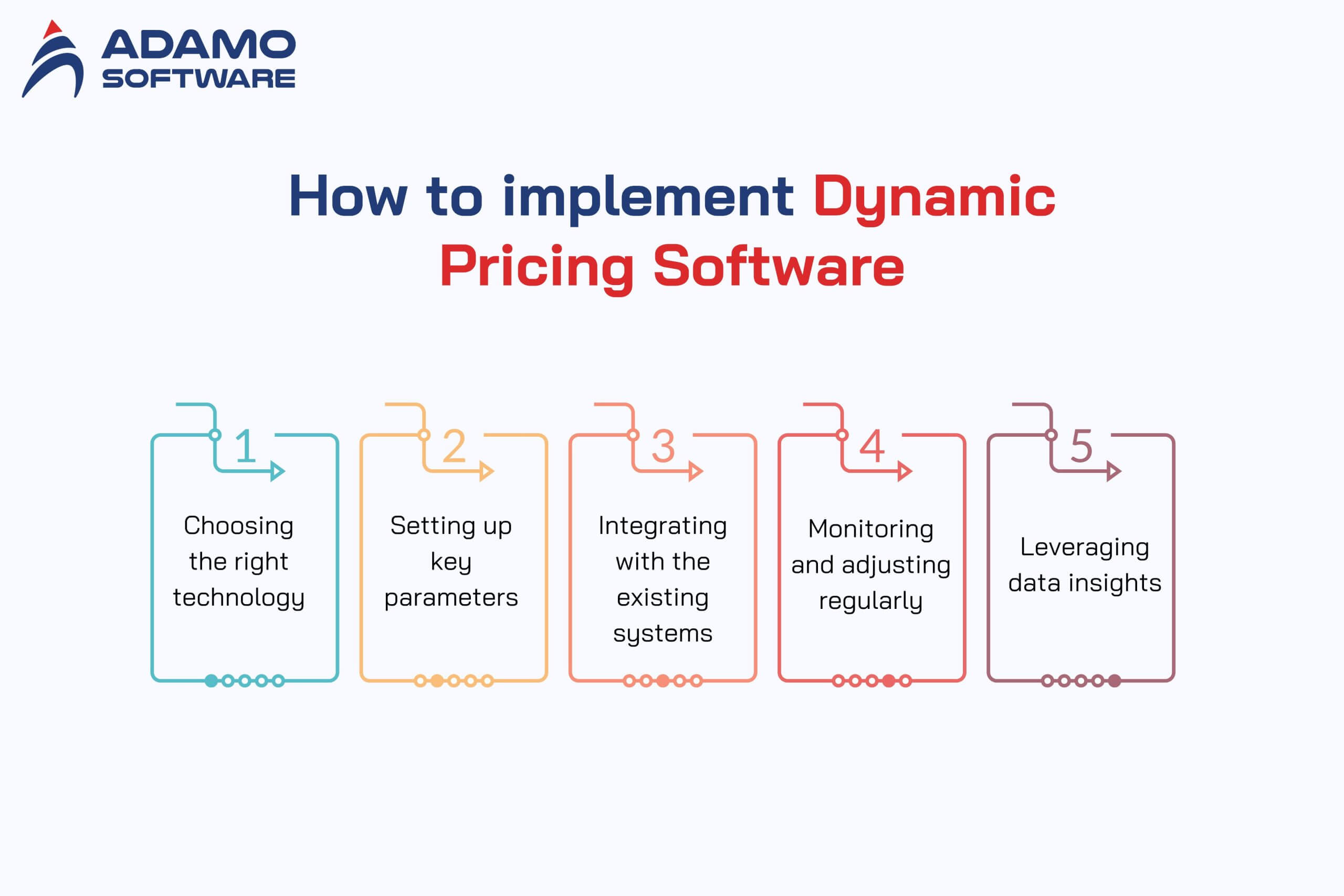
Choosing the right technology
Firstly, you must research and choose dynamic pricing strategies that suit your hotel size, budget, and business goals. When choosing dynamic pricing software for your hotel, let’s prioritize user-friendliness, seamless integration, and reliable support.
If you are new to revenue management, choose a dynamic pricing tool that fits your needs, from simple solutions to a full revenue management system. Starting with the right technology saves time, and money, and avoids operational risks.
Setting up key parameters
After selecting the right technology for your hotel dynamic pricing software, you may want to establish essential parameters. They include minimum and maximum prices, room types, booking periods, special days, and discounts. Most systems offer custom settings, allowing you to adjust or override the software’s suggestions when necessary. The correct initial configuration ensures effective system operation and prices align with your hotel’s strategy.
Integrating with your existing systems
To ensure seamless price updates, you may want to integrate the dynamic pricing software with your existing hotel management systems, including the property management system (PMS) and channel manager. This helps you synchronize data and update room rates automatically across all platforms. Besides, this integration also prevents double bookings and ensures real-time availability updates for your hotel.
Monitoring and adjusting regularly
Although the dynamic pricing software handles most rate adjustments, periodic performance monitoring is important. By reviewing software reports, you can gain insights into demand trends, evaluate pricing, and make necessary adjustments. This may involve tweaking pricing rules, review the event calendar, or check customer feedback. Proactive monitoring will help optimize the long-term benefits of the software.
Leveraging data insights
Dynamic pricing tools often provide hotels with analytics and insights into guest behavior and market trends. By leveraging these data insights, you can better understand when demand is highest, how far in advance bookings are made, and recognize other trends to further optimize your pricing strategy.
In general, by following the above five steps, you can set up your hotel’s dynamic pricing software. Dynamic pricing helps your hotel ensure that you’re selling the appropriate room, at the optimal rate, at the ideal time.
V. 5 best dynamic pricing software for businesses to consider
Currently, there are many dynamic pricing software that help hotels optimize revenue and improve occupancy. However, not all of them are suitable for every business model. Let Adamo Software recommend the top 05 best tools to consider.
Duetto
Duetto is one of the famous dynamic pricing software that many businesses choose. It uses predictive analytics and open pricing to keep hotel rooms optimally priced daily. This dynamic pricing software generates projections for your hotel for up to 5 years into the future based on historical data, current booking trends, and external market conditions.
The software predicts occupancy, and demand peaks/downturns for better pricing and inventory decisions for your hotel. Recommendations can be adjusted for specific business needs, promotions, or brand strategy. Besides, the ability to integrate with PMSs, booking engines, channel managers, rate shopping tools, etc., is also an advantage of Duetto.
PriceLabs
PriceLabs is outstanding with its flexible customization and intuitive interface, making it perfect for small hotels, serviced apartments, or short-term rentals. The software automatically adjusts daily prices based on factors such as market demand, local events, and length of stay. The software’s algorithm uses data from Airbnb, Vrbo, Booking.com, and your hotel’s booking history to detect market trends and suggest nightly prices. You can sync it with various PMS and channel managers or set up your own API connection for your hotel.
PricePoint
PricePoint is an automated dynamic pricing software aimed at small and medium-sized hotels that adjusts room rates in real-time based on AI and market data. Its user-friendly interface and ability to quickly sync with room management systems are its major strengths.
This system proactively creates demand forecasts for your hotel through simulations and automatically adjusts prices in response to any market shifts or booking changes, ensuring optimal rates. This tool can operate using its own data, but for optimal prediction accuracy, it advises leveraging at least two years of historical data from your hotel’s PMS. It also uses current trends, events, and weather, and continuously updates forecasts.
RoomPriceGenie
RoomPriceGenie is the ideal dynamic pricing software for small and family-run hotels. The software automatically optimizes prices based on occupancy rates, market trends, and competitor prices. One of its unique features is surge protection, offering a model that triggers after your hotel experiences a significant increase in bookings, alerting you to the surging demand.
Smartpricing
Smartpricing is a smart pricing solution for accommodation properties in Europe and is expanding globally. The software adjusts prices in real-time based on factors such as user behavior, seasonality, and special events. Smartpricing integrates with a wide variety of PMSs, channel managers, and other systems commonly used by hotels. The company provides its pricing details upon request, after understanding your specific business needs.
Ready to Outsource?
Get top-tier IT talent without the hassle. Contact us now!
VI. Why choose Adamo Software
Do you want to have your own dynamic pricing software for your hotel? Are you looking for a partner to help you with this? As one of Vietnam’s leading travel and hospitality software development companies with many years of experience, Adamo Software can be your ideal choice. Here’s why you may want to choose us.

Extensive experience in the hospitality industry
Adamo Software has worked with many businesses in the global hospitality industry, from small hotels to luxury resort chains. With a deep understanding of user behavior, booking trends, and distribution channels, we can design solutions that are suitable to your business model and needs.
Developing custom software for your needs
Based on your needs, Adamo will provide a dynamic pricing software solution that fits your hotel’s operations, target markets, and pricing strategies. You can easily set up pricing rules, and integrate your existing PMS, channel manager, or CRM.
Flexible integration capabilities
With an experienced technical team, Adamo Software helps hotels connect pricing software with existing systems such as PMS, OTA, data analytics tools, or AI technology. Thanks to that, you can adjust room prices accurately on any platform without manual operations.
Supporting smart analytics and forecasting
Adamo’s solution integrates data analytics and AI tools, helping hotels forecast market trends, track price performance, and make data-driven decisions. Thanks to this, hotels can increase revenue and maintain sustainable competitiveness.
Providing post-launching services
Besides designing and developing dynamic pricing software for your hotel, Adamo Software also supports post-launching operations. The technical team is always available 24/7 to handle problems, update the system, or answer user questions. Whenever a problem arises, you will always be responded to and supported quickly. The software will be upgraded periodically to meet changing business needs and adapt to new technological trends. Adamo also supports optimizing system performance based on real user feedback.
Still hesitating whether to choose Adamo? Let’s contact us for more detailed information.
FAQs
1. Is dynamic pricing software beneficial for small hotels?
Yes, small hotels can also benefit from the dynamic pricing software. Real-time market and competitor insights allow small hotels to adjust rates without a full-time revenue team.
2. What data do hotel pricing tools gather?
Hotel pricing intelligence tools use data like historical occupancy and rates, competitor pricing, local events and holiday demand. Besides, the dynamic pricing software also collects data about current booking pace and guest demographics.
3. Are there any free or cheap hotel rate analysis software options?
Yes. While many premium dynamic pricing tools come with a substantial monthly or annual fee, there are budget-friendly options that smaller hotels and independent properties can explore.


